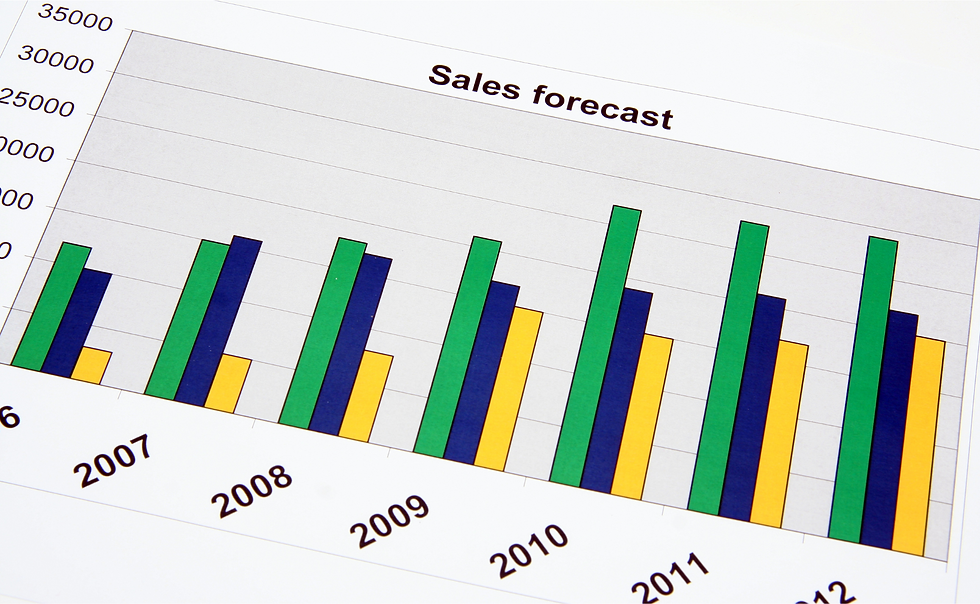Plan, Predict, and Prosper: Financial Forecasting Secrets for Small Business Success
- hiensam

- Feb 26
- 5 min read
Financial forecasting is an essential practice for small businesses aiming to achieve sustained growth and stability. It involves predicting future revenues, expenses, and cash flow to make informed decisions. By understanding potential financial outcomes, small business owners can strategize effectively, allocate resources wisely, and mitigate risks. This introductory guide will explore the fundamental concepts of financial forecasting, providing a roadmap for entrepreneurs to harness this powerful tool to navigate their business toward success.

Understanding the Basics of Financial Forecasting
Financial forecasting serves as a compass for small businesses, guiding them through the uncertainties of future financial landscapes. At its core, forecasting is about creating predictive models based on historical data and anticipated market conditions to estimate future financial outcomes. This process helps business owners understand the potential financial impacts of their decisions today.
Key Concepts:
Revenue Forecasting: Involves estimating future sales based on market trends, historical sales data, and industry growth rates.
Expense Forecasting: Focuses on predicting future costs, taking into account fixed and variable expenses and potential increases in material or labor costs.
Cash Flow Forecasting: Critical for maintaining business liquidity, it predicts the inflows and outflows of cash, ensuring that the business can meet its financial obligations.
Role in Business Planning: Financial forecasting is integral to strategic business planning. It allows entrepreneurs to set realistic goals, secure financing, and manage investments effectively. By anticipating future financial scenarios, small businesses can devise strategies to exploit opportunities and buffer against potential downturns, ensuring long-term sustainability and growth.
Key Components of a Financial Forecast
A robust financial forecast for a small business involves several critical components that collectively provide a clear picture of the future financial health of the company. Understanding these components can help business owners prepare more accurate and actionable forecasts.
Revenue Predictions:
Market Analysis: Assess market trends and demand to predict sales volumes.
Historical Sales Data: Use past sales data to identify patterns and growth rates.
Pricing Strategy: Consider how pricing adjustments could affect future revenues.
Expense Estimates:
Fixed Costs: Rent, salaries, and other costs that remain constant regardless of business activity.
Variable Costs: Costs that fluctuate with sales volume, such as materials and direct labor.
Future Investments: Planned expenditures on equipment, technology, or expansion.
Cash Flow Forecasting:
Inflow Estimates: Projected sales and other income sources.
Outflow Projections: Scheduled payments, expected purchases, and other expenses.
Net Cash Flow: The difference between inflows and outflows, crucial for assessing liquidity.
Accurately projecting these elements ensures that small business owners can foresee financial challenges and opportunities, helping them make informed decisions about growth, investments, and sustainability.
Tools and Techniques for Effective Forecasting
To create accurate financial forecasts, small businesses can leverage various tools and techniques that facilitate analysis and prediction. These tools not only streamline the forecasting process but also enhance the accuracy of the projections.

Software Solutions:
Accounting Software: Programs like QuickBooks and Xero offer built-in forecasting tools that can automatically generate financial projections based on existing financial data.
Dedicated Forecasting Software: Tools such as Futrli and Float provide advanced features tailored for creating detailed financial forecasts, including scenario planning and cash flow analysis.
Spreadsheet Modeling:
Excel and Google Sheets: These platforms are fundamental for custom financial modeling. They allow business owners to use historical data to create flexible and complex forecasts.
Templates and Formulas: Utilizing pre-built templates and mastering key formulas can help in setting up structured forecasts that are easy to update and interpret.
Tips for Effective Forecasting:
Regular Updates: Update forecasts regularly to reflect new financial data and market conditions.
Sensitivity Analysis: Test different scenarios to understand potential impacts of various business decisions or external changes.
Using these tools and techniques, small businesses can develop reliable financial forecasts that provide valuable insights for strategic decision-making.
Creating a Financial Forecast Step-by-Step
Creating an effective financial forecast involves a systematic approach that builds on the foundational data and tools discussed earlier. Here’s a step-by-step guide to help small business owners develop their own financial forecasts:
Step 1: Gather Historical Data
Collect relevant financial data from the past 2-3 years, including income statements, balance sheets, and cash flow statements.
Step 2: Analyze Trends and Patterns
Examine the historical data to identify trends and patterns in revenue, expenses, and cash flow, which will inform your projections.
Step 3: Define Assumptions
Based on your analysis, establish realistic assumptions about future market conditions, sales growth, cost trends, and economic factors.
Step 4: Create the Forecast Model
Using spreadsheet software or a dedicated forecasting tool, input your assumptions and historical data to build the forecast model.
Step 5: Project Future Finances
Calculate future revenues, expenses, and cash flow based on your model. Adjust the model as necessary to reflect different scenarios and their outcomes.
Step 6: Review and Refine
Critically evaluate the forecast. Consider getting feedback from financial advisors or stakeholders to refine the projections.
Step 7: Implement and Monitor
Use the forecast as part of your business planning. Regularly compare actual financial results against the forecast and adjust your business strategies accordingly.
This step-by-step process not only helps in creating a robust financial forecast but also in integrating it into the ongoing strategic management of the business.
Common Pitfalls in Financial Forecasting and How to Avoid Them
Financial forecasting is a powerful tool, but it's also susceptible to certain pitfalls that can skew the accuracy and usefulness of the results. Here’s how to recognize and avoid these common errors:

Overly Optimistic Revenue Projections:
Realism in Sales Estimates: Ensure that revenue forecasts are grounded in realistic, data-driven assumptions rather than wishful thinking.
Market Analysis: Regularly update your understanding of the market conditions to keep projections relevant and achievable.
Underestimating Expenses:
Comprehensive Cost Analysis: Include all potential costs, even those that are irregular or seemingly minor, to avoid surprises.
Contingency Planning: Set aside a portion of the budget for unexpected expenses to safeguard against financial strain.
Ignoring Market and Economic Indicators:
Stay Informed: Keep abreast of economic trends and industry movements that could impact your business.
Flexible Forecasting: Build flexibility into your forecasts to quickly adapt to unforeseen changes in the business environment.
Lack of Regular Updates:
Dynamic Revisions: Treat your financial forecast as a living document that requires regular review and adjustment as new data becomes available.
Engage Stakeholders: Regularly discuss the forecast with your team and advisors to gain different perspectives and insights.
By being aware of these pitfalls and actively working to avoid them, small business owners can enhance the reliability and effectiveness of their financial forecasting efforts.
In conclusion, financial forecasting is not just a numerical exercise; it's a strategic tool that empowers small business owners to plan for the future with confidence. By effectively utilizing forecasts, you can steer your business toward financial health and sustainable growth.
Embrace the Forecasting Process: Begin by integrating financial forecasting into your regular business planning. Even a simple forecast can provide significant insights into your financial trajectory.
Seek Continuous Improvement: As you gain more experience and data, continually refine your forecasts to increase their accuracy and relevance.
Consider Professional Guidance: If you find the process overwhelming, consider consulting with a financial expert. WSC Accounting offers expert forecasting services that can help you navigate complex financial landscapes and optimize your business strategies for maximum growth.
Taking these steps will not only enhance your financial management practices but also improve your ability to make informed decisions that drive business success.






Comments